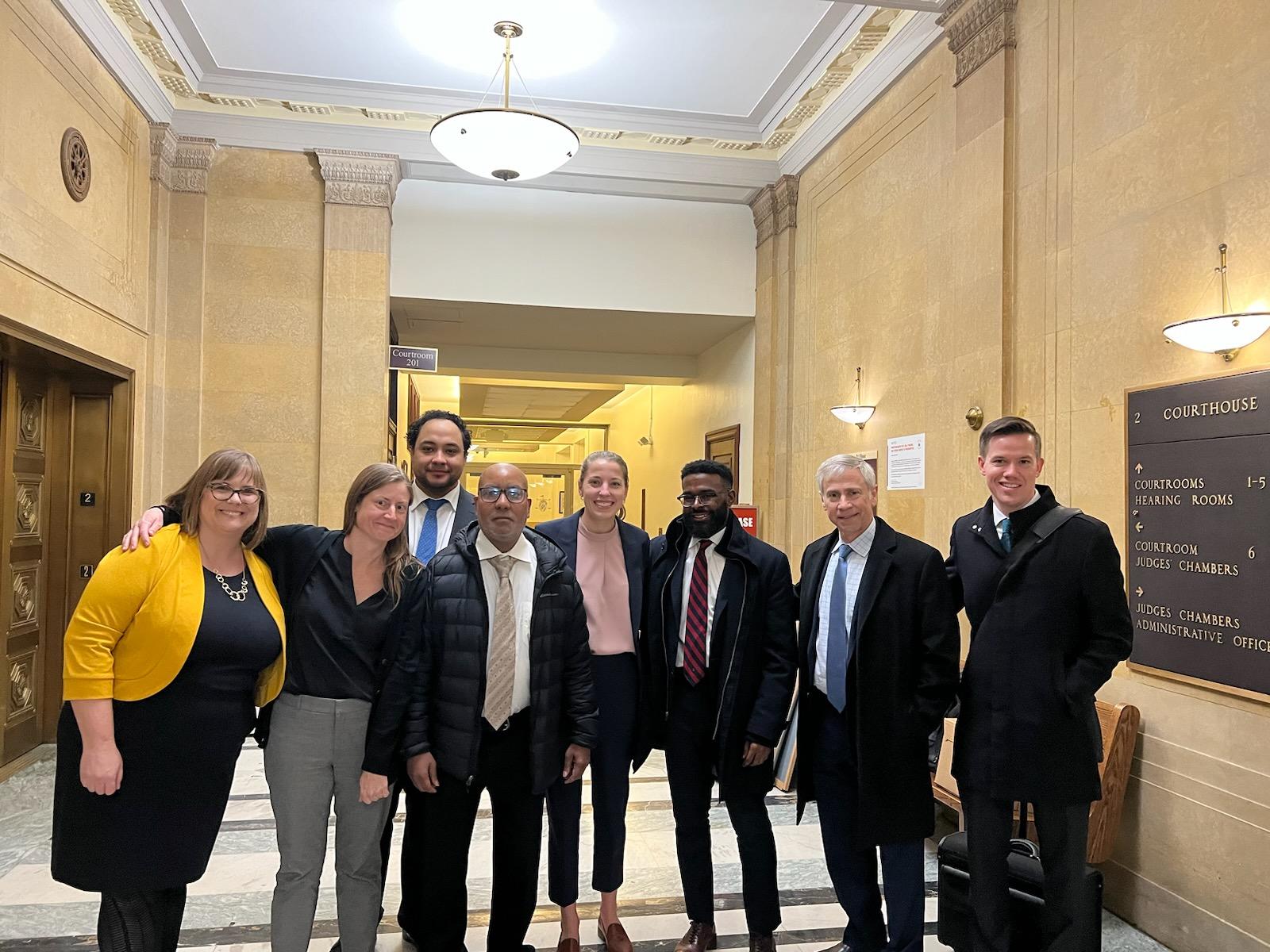T. Greg Hall Finally Exonerated!
April 18, 2023 (Baltimore County, MD) Last week, MAIP client T. Greg Hall was fully exonerated when the Baltimore City State’s Attorney dropped murder charges against him, following a March decision by the Baltimore City Circuit Court to grant T.’s Petition for a Writ of Actual Innocence and vacate his 1992 murder conviction. For T., who has been home on parole since 2017, the ruling finally clears his name and vindicates what he has said since his 1991 arrest: that he had nothing to do with the murder in question.
Last month, I sat in the back row of Courtroom 201 in the Baltimore City Circuit Court, watching MAIP Staff Attorney Maggie Abernethy team up with former MAIP Board Chair Barry Pollack of Harris St. Laurent & Wechsler and Rey Watson of Kramer Levin to give client T, his long-awaited day in court. As I watched them present witnesses and make arguments, it was hard to believe how far we’d come since I’d first heard about T.’s case a few months after starting as the sole MAIP employee in 2005.

T. had been convicted of a 1991 murder based solely on the testimony of two purported eyewitnesses, whom police said were the only two people to witness the crime. The first, Nancy Hill, said she was walking that evening with her five children when the victim ran past her into an alley, knocking down one of her children. As she reached for her child, two men carrying weapons ran into the alley after the victim. She then heard gunshots and quickly left the area, ultimately telling police that one of the people chasing the victim – whose face was mostly obscured by a black hoodie – was T., whom she knew from the neighborhood. The second purported eyewitness, Gerald Patterson, said he was driving by the scene when he heard gunshots and then saw three men running across the street, one of whom was carrying a weapon. He claimed T. was the person carrying the weapon.
The case against T. was weak, and even the victim’s brother thought T. was innocent. We decided to investigate the case, even though we had no staff attorneys, investigators, or money to hire investigators. Instead, his case was assigned to law student volunteers at Georgetown for investigation in the fall of 2005. Not much older than them, I went with them as we searched for information and witnesses, to no avail.
As MAIP slowly grew, though, the case started to come together. When our first staff attorney obtained the police file decades after T. conviction, it became clear that the state’s case was even weaker than it appeared. There actually had been multiple eyewitnesses to the crime – one of whom emphatically said it was not T., and two of whom gave a description that did not match T. Other undisclosed witnesses also told police about an alternative suspect, who not only had a motive to commit the crime, but whose description matched the description provided by the other withheld eyewitnesses. Moreover, Patterson initially told police that he arrived at the scene 10-15 minutes after the shooting, which was corroborated by another passenger in the car. None of this was disclosed to the defense.
And, after years of effort and the hiring of multiple lawyers and investigators, witnesses finally started talking. The two people who were with Patterson that night confirmed that they arrived well after the shooting and did not see who was involved. Two of the eyewitnesses who were not disclosed to the defense were located; both confirmed that as they had told police in 1991, T. was not involved. Finally, last year, Patterson admitted that he hadn’t seen the shooting at all and that he’d made up the story because police had arrested him on drug charges and were threatening him.
Patterson and the other witnesses testified at the March hearing on T.’s Petition for a Writ of Actual Innocence. Although the State did not contest any of our evidence, it argued (tepidly) that we did not satisfy the required standard because of Nancy Hill’s testimony. The judge rejected that argument after a mere six days, issuing an opinion on March 15 granting the Writ.
When T. filled out our questionnaire in 2004, he wrote that “I always hear about DNA testing helping out prisoners, but what about prisoners like me that DNA can’t help…” That’s precisely why a committed group of volunteer lawyers started MAIP in 2000 and precisely why I wanted so badly to do this work. I couldn’t help T. on my own, but with your generosity and support, we’ve hired an incredible staff that can and did help him.
Thank you for that. And thank you to an incredible village of people who helped T. along the way. That team includes Maggie, Barry, and Rey, as well as Staff Investigator Sophie Vick, whose optimism and skill led to Patterson’s recantation. It also includes Staff Investigators Emily Pate and Jake Richardson, Legal Director James Moody, Senior Counsel Michele Nethercott, contract investigators Sean Gordon and Pili Greenfield; Daniella Gordon of Armstrong Teasdale and Mary Walsh from Friedman Nemeck & Longformer; former MAIP staff Parisa Dehghani-Tafti, Lindsay Dressler, Ben Flick, and Charles McLaurin; volunteer investigators James Trainum and Brad Garrett; and more than a dozen law students from Georgetown, George Washington, and Stanford.